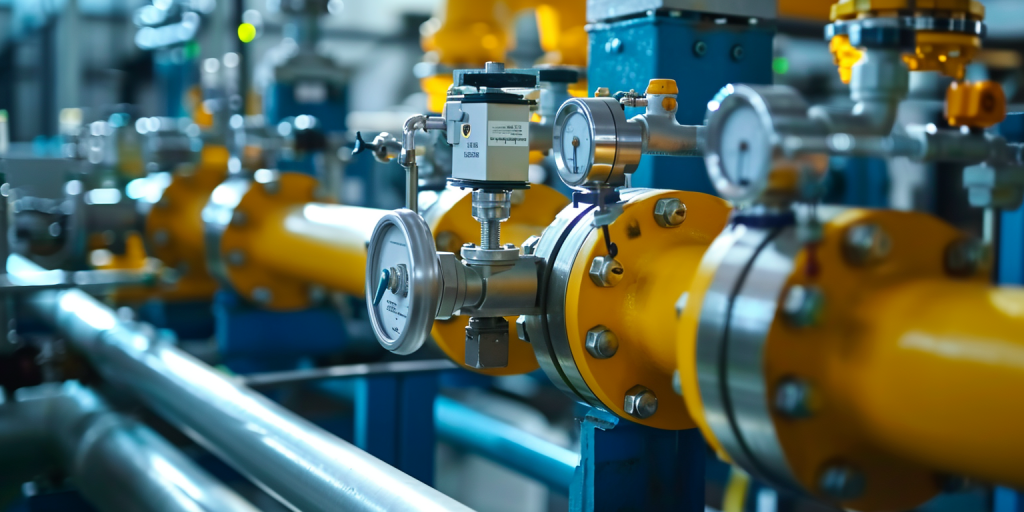
Flow measurement is a core requirement across many industries, underpinning process control, quality assurance, and resource management. With multiple technologies available, each optimised for different applications, it’s important to understand their principles, advantages, and limitations before making a choice. This guide compares major flowmeter types and highlights where each performs best.
1. Differential Pressure (DP) Flowmeters
Principle: Measure the pressure drop across a restriction, such as an orifice plate, to calculate flow rate.
Applications: Gases, liquids, and steam in a wide range of industries.
Pros: Established technology, cost‑effective, suitable for high‑pressure service.
Cons: Permanent pressure loss, reduced accuracy at low flows.
2. Electromagnetic Flowmeters
Principle: Apply Faraday’s law of electromagnetic induction to measure conductive liquids.
Applications: Water, wastewater, and other conductive process fluids.
Pros: No moving parts, minimal pressure drop, corrosion‑resistant, highly accurate.
Cons: Not suitable for non‑conductive fluids, relatively high initial cost.
3. Ultrasonic Flowmeters
Principle: Use sound waves to determine fluid velocity.
Applications: Clean liquids and gases.
Pros: Non‑intrusive, no moving parts, adaptable to various fluids, accurate when installed correctly.
Cons: Higher capital cost, less accurate in highly turbulent flows.
4. Coriolis Mass Flowmeters
Principle: Detect twisting of vibrating tubes caused by fluid passing through, directly measuring mass flow.
Applications: High‑precision liquid and gas measurement, especially in chemical and food sectors.
Pros: Exceptional accuracy, handles multiple fluid types.
Cons: High cost, best suited to low‑ and medium‑flow ranges, moderate viscosity.
5. Thermal Mass Flowmeters
Principle: Measure the cooling effect of flowing fluid on a heated sensor.
Applications: Primarily gases such as air, natural gas, and process gases; some liquid uses.
Pros: Low pressure drop, effective at low flow rates, broad turndown ratio.
Cons: Limited to gases for most applications, affected by changes in gas composition or temperature.
6. Vortex Shedding Flowmeters
Principle: Count vortices shed downstream of a bluff body in the flow.
Applications: Gas, liquid, and steam measurement in pipelines.
Pros: No moving parts, operates at high temperatures and pressures.
Cons: Less accurate at low flows, sensitive to pipe vibrations.
7. Positive Displacement Flowmeters
Principle: Capture and measure discrete volumes of fluid, ideal for viscous media.
Applications: Oils, lubricants, chemicals, pharmaceuticals.
Pros: High accuracy, good at low flows, handles a wide viscosity range.
Cons: Creates pressure drop, limited turndown ratio.
8. Turbine Flowmeters
Principle: Measure flow velocity via a rotating turbine in the flowstream.
Applications: Hydrocarbons in oil and gas, fuel measurement.
Pros: Accurate, suited to high‑flow services, compact.
Cons: Performance drops with high‑viscosity or dirty fluids, sensitive to particulates.
Selecting the right technology depends on the type of fluid, operating conditions, flow range, accuracy requirements, and budget. By understanding each method’s strengths and trade‑offs, operators can match the right meter to the right application—ensuring reliable measurement and process efficiency.
